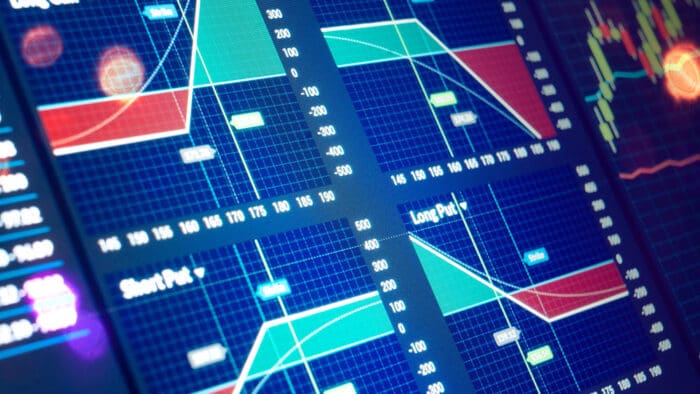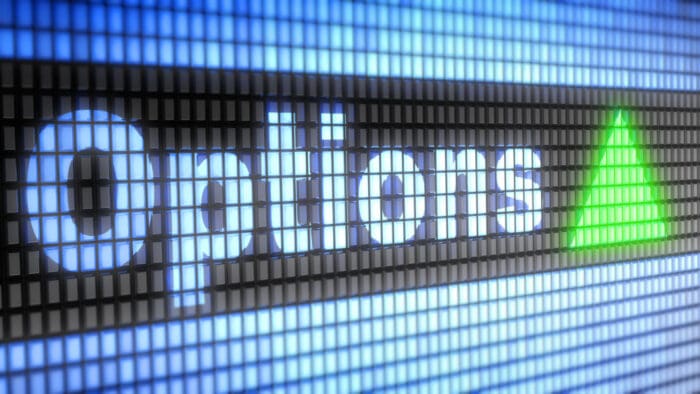Today’s Consumer Price Index (CPI) results provide a mixed view of the economy, with price gains easing in goods and commodities but continuing to climb significantly in the services segment. While the decline in the overall headline CPI number is encouraging, the economy is facing the threat of a painfully slow downward trajectory toward 2% inflation. While the journey from 9% inflation to 5% took nine months, the trip down to 2% is likely to take at least fourteen. Moreover, the persistent services industry inflation could entice the Federal Reserve to remain aggressive with monetary policy tightening, thereby increasing the risk of recession at a time when the outlook for corporate earnings is weakening.
The headline CPI index increased 5.0% year-over-year (y/y) in March, lower than the 5.1% consensus and from February’s 6% reading. It marks the ninth consecutive month of lower headline readings. For the core-CPI however, the win streak was broken this morning, with March’s 5.6% showing the first increase in the y/y figure in five months. March’s 5.6% y/y figure exceeded February’s 5.5% and arrived in-line with consensus expectations. In the very short term, overall inflation rose 0.1% month-over-month (m/m) while core rose 0.4% m/m. Both readings improved from the previous month’s readings of 0.4% and 0.5%.
While food costs declined at the supermarket by 0.3%, food at dining establishments continued rising at a brisk 0.6% pace, which is emblematic of the challenges associated with reining in services inflation. Leisure and hospitality remains the hottest labor sector of them all.
Last month’s progress was driven by energy, which declined significantly as bank failures and recession fears weighed on the demand outlook. Gasoline prices declined 4.6% during the period while energy services (electricity and heating) dropped 2.3%. Used automobiles, medical care services and food at home also offered relief, dropping 0.9%, 0.5% and 0.3% m/m, respectively. Price gains on the other hand were led by transportation services, shelter, food at dining establishments, medical care commodities and new automobiles with increases of 1.4%, 0.6%, 0.6%, 0.6% and 0.3%. While food costs declined at the supermarket by 0.3%, food at dining establishments continued rising at a brisk 0.6% pace, which is emblematic of the challenges associated with reining in services inflation. Leisure and hospitality remains the hottest labor sector of them all.
Markets were responding positively, until the bears took control and reversed early morning progress. The S&P 500 and Nasdaq indices are down 0.2% and 0.4% in early trading. Bonds are relatively subdued as traders dial back their Fed rate move and inflation expectations. The 2-year Treasury is down 6 basis points (bps) while the 10-year is down 3 bps. Peak Fed is also driving the dollar lower, with the Dollar Index declining 0.7% to 101.50, near its year-to-date low of 101.03.
Oil Throws a Wrench in the System
The CPI readings come as the potential for stagflation, or anemic growth and persistent inflation, appears more likely, with OPEC + cuts in oil production fueling higher energy costs and placing China’s recent disinflation under the spotlight. Energy costs can create inflation throughout the economy while curtailing overall demand as consumers spend a larger portion of their disposable income on gasoline. So far in April, crude oil prices are up roughly 10% from the March average of $73.28. Prices rose this morning as well, climbing 1.6% to $82.80, 13% higher than the March average.
OPEC + kicked off April by saying its members decided to expand oil production cuts to a total of 3.66 million barrels per day b/d, representing a 1.66 million b/d increase from the 2 million b/d cut the cartel announced in October. The total reduction represents roughly 3.7% of global energy demand.
In making the announcement, OPEC + was responding to WTI Crude oil prices falling to almost $65 a barrel from a decade and change high of $130 in the spring of last year. The significant price drop resulted from investors shifting out of risk assets in response to fears that the weaknesses of Swiss bank Credit Suisse and U.S. banks Signature Bank and Silicon Valley Bank could spark a banking contagion.
To that end, investors are watching the mixed results of China’s economic reopening and the country’s potential oil consumption following strict lockdowns to slow the spread of Covid-19. During more normal times, China consumes 16 million b/d and is the largest importer and second largest global consumer. Weak Chinese consumption resulting from a sluggish economic recovery could help keep oil demand and prices down.
China’s services industry appears to be strengthening with the Caixin China General Services PMI increasing to 57.8 in March, up from 55.0 in February and exceeding the consensus forecast of 54.8. New orders and employment increased after the scaling back of Covid-19 prevention measures. Input inflation, however, accelerated at the fastest rate in seven months and business sentiment weakened.
The country’s Caixan/S&P Global Manufacturing PMI fell from 51.6 in February to 50.0 however, which is the contraction/expansion border. The PMI also fell short of analysts’ expectations of 51.7. This slowdown was driven, in part, by companies allowing their inventories to fall as they maintained a cautious outlook for the economy. New export activity also declined but input costs stabilized, ending a five-month sequence of price increases.
Perhaps more significantly, the country’s Consumer Price Index declined 0.3% month over month, which was worse than the analyst expectation of 0.2% but better than the -0.5% reading for February. The two consecutive months of disinflation imply that the country’s economy isn’t recovering from Covid-19 shutdowns as quickly as expected.
The Murky Earnings Outlook
Analysts are projecting an S&P 500 Index first quarter earnings decline of 6.6% y/y with improvements expected throughout the year. This outlook may be overly optimistic because earnings don’t typically trough before recession, which will likely occur in the 2nd half. In addition, consumer exhaustion occurring simultaneously alongside tighter and increasingly restrictive credit is likely to weigh on corporate earnings.
For consumers, real spending is likely to contract due to the following factors:
- Rising gasoline prices will consume a larger portion of Americans’ disposable incomes, causing individuals to cut back on their spending for discretionary items, which will likely hurt corporate revenues.
- Consumers are testing the limits of how much debt they can accumulate and service. Credit card balances are increasing every week while rates rise. Balances reached $975 billion late last month and are likely to reach $1 trillion in June. Moreover, the average interest rate for credit cards in February reached a stifling 20% compared to 16.2% 12 months prior.
- As the economy continues to weaken in the aftermath of the banking crisis, financial institutions are likely to continue to tighten their lending requirements, thereby making it harder for consumers to continue living beyond their means by piling on more debt.
- The labor market is quickly losing steam as layoffs and participation rise while wage gains slow, which will weigh on consumer spending appetites.
As corporations struggle to improve revenues and the consumer slows, higher energy costs will increase businesses operating expenses, such as transportation costs and shipping costs. Corporations will likely be squeezed between maintaining profit margins by passing higher costs on to consumers or by trying to increase sales by discounting prices at the expense of weaker profit margins. Moreover, for earnings to trough in the first quarter, Fed rate cuts are required to reverse deteriorating economic momentum. This morning’s CPI report and the strong rise in oil prices doesn’t support a lighter Fed. In addition to a decline in bank lending, 475 basis points of Fed hikes with more on the way, which investors place at a 73% likelihood, needs to be digested. Meanwhile, global trade is contracting as economies in many countries weaken due to tighter monetary policy and persistent inflation.
Visit Traders’ Academy to Learn More about the Consumer Price index and Other Economic Indicators.
Disclosure: Interactive Brokers Affiliate
Information posted on IBKR Campus that is provided by third-parties does NOT constitute a recommendation that you should contract for the services of that third party. Third-party participants who contribute to IBKR Campus are independent of Interactive Brokers and Interactive Brokers does not make any representations or warranties concerning the services offered, their past or future performance, or the accuracy of the information provided by the third party. Past performance is no guarantee of future results.
This material is from IBKR Macroeconomics, an affiliate of Interactive Brokers LLC, and is being posted with its permission. The views expressed in this material are solely those of the author and/or IBKR Macroeconomics and Interactive Brokers is not endorsing or recommending any investment or trading discussed in the material. This material is not and should not be construed as an offer to buy or sell any security. It should not be construed as research or investment advice or a recommendation to buy, sell or hold any security or commodity. This material does not and is not intended to take into account the particular financial conditions, investment objectives or requirements of individual customers. Before acting on this material, you should consider whether it is suitable for your particular circumstances and, as necessary, seek professional advice.
Disclosure: Futures Trading
Futures are not suitable for all investors. The amount you may lose may be greater than your initial investment. Before trading futures, please read the CFTC Risk Disclosure. A copy and additional information are available at ibkr.com.





















Join The Conversation
For specific platform feedback and suggestions, please submit it directly to our team using these instructions.
If you have an account-specific question or concern, please reach out to Client Services.
We encourage you to look through our FAQs before posting. Your question may already be covered!